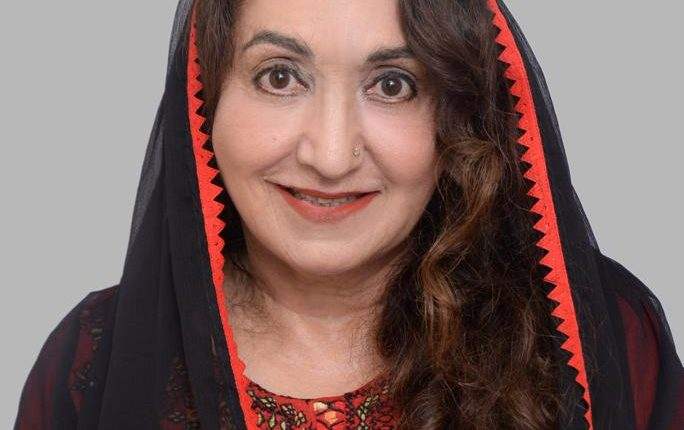This year the theme for celebrating the International Women Day on 8th March 2023 is, “DigitALL: Innovation and technology for gender equality”.
Do you know that the suitcase on wheels (which is a simple technology and a simple innovation) was created 2 years in 1970 after NASA sent two men to the moon in 1968. A man by the name of Bernard Sadow made this suitcase by putting 4 wheels on it. Why did this simple innovation take so long even though the wheel was invented some 5000 years before?
Two assumptions about gender were at work here. The first was that no man would ever roll a suitcase because it was simply “unmanly” to do so. The second was about the mobility of women. But women didn’t travel alone, the industry assumed. If a woman travelled, she would travel with a man who would then carry her bag for her. This is why the industry couldn’t see any commercial potential in the rolling suitcase. It took more than 15 years for the invention to go mainstream, even after Sadow had patented it.
Why we need to bring women into technology:
Because it brings more creative solutions and has greater potential for innovations. When we are innovative, it fastens the pace of development, and forces us to think about solutions that meet women’s needs and promote gender equality.
The lack of inclusion of women, by contrast, comes with massive costs: as per UN Women’s Gender Snapshot 2022 report, : by excluding women from the digital world the low and middle income countries like Pakistan have lost $1 trillion from the gross domestic product in the last decade—a loss that will grow to $1.5 trillion by 2025 without action
A gender-responsive approach to innovation, technology and digital education can increase the awareness of women and girls regarding their rights and civic engagement.
Where Does Pakistan stand:
According to a 2020 GSMA (Global System for Mobile Communication) report, in Pakistan only 37% men and 19% women have access to mobile internet.
Why women are lagging behind in digitalization? What are the barriers and challenges:?
The gender digital divide is becoming the new face of gender inequality, preventing millions of women from accessing education, jobs and other indispensable services. These gaps are rooted in longstanding and persistent stereotypes, which also diminish women’s participation and leadership in innovation processes. The following are the main barriers:
- For an estimated 11 million women in Pakistan, family disapproval is the key barrier to owning a mobile phone.
- Low literacy levels and unaffordable handsets and data are also key barriers to women owning mobile phones and using mobile internet
- Geographical Location is a major determinant of accessibility to the internet. Several districts of Balochistan, most of the newly merged districts of Khyber Pakhtunkhwa and the entirety of Gilgit-Baltistan and Azad Jammu and Kashmir have unreliable internet and mobile connectivity.
KP Govt Innovation and Technology for Gender Equality:
The KP Govt has taken initiatives to contribute to the digital economy of the province, while strengthening the larger digital ecosystem of Pakistan. Some of the and models of innovation and technology for closing the digital gender gap are as follows:
- KP Commission on the Status of Women, P & D Dept and Bureau of Statistics joined efforts for establishing Gender Management Information System. The GMIS will measure the status of women in KP. The indicators were jointly developed by KPCSW and the P& D Department. The Bureau of Statistics is providing technical support in developing the system.
- KP ITB: is providing Digital Skills training to 3000 women. Through this project courses are offered in social media marketing, graphic designing, WordPress design and development, blogging and digital tools productivity.
KPITB also launched the She Means Business Program in 2021 in collaboration with Facebook, and trained 250 women entrepraneaurs from 6 districts. The participants learnt strategies to grow their online engagement, make use of social media insights, create Instagram Stories and manage Facebook Ads.
- Social Welfare and Women Development Dept: Bolo Helpline.
- KP TEVTA (Technical and Vocational Training Authority and various institutes around the province) are providing digital literacy skills to women.
- KP Police (Digital application for FIR, Women Desks and online reporting. It is also documenting data on crimes against women.
- Ombudsperson for Workplace Harrassment : Database, Online Hearing, and Help Line.
- KP Revenue Department: digitalization of land records, and recruitment of women patwaris.
And a myriad of initiatives by other stake holders especially from civil society and the private sector. Schools and Centers have cropped up providing computer and other skills. For example: The Enligthen Lab (an NGO in Peshawar) trained 50 women entrepreneurs on how to earn money online.
Recommendations:
- The root causes of the gender Digital gap are complex, diverse and interconnected, and cannot be addressed by one stakeholder. organisation or the mobile industry alone. The policymakers, industry, the development community and other stakeholders need to ensure that women in Pakistan are no longer left behind.
- Stakeholders in Pakistan should focus primarily on bridging the country’s wide gender gap. This will require addressing three main barriers: literacy and digital skills, affordability and the strong influence of social norms on women’s ability to access and use of mobile technology
- The government, mobile industry and development community should work together to address the above barriers, especially raising awareness of how owning and using a mobile phone can benefit women and their families, and implementation of the above recommendations

